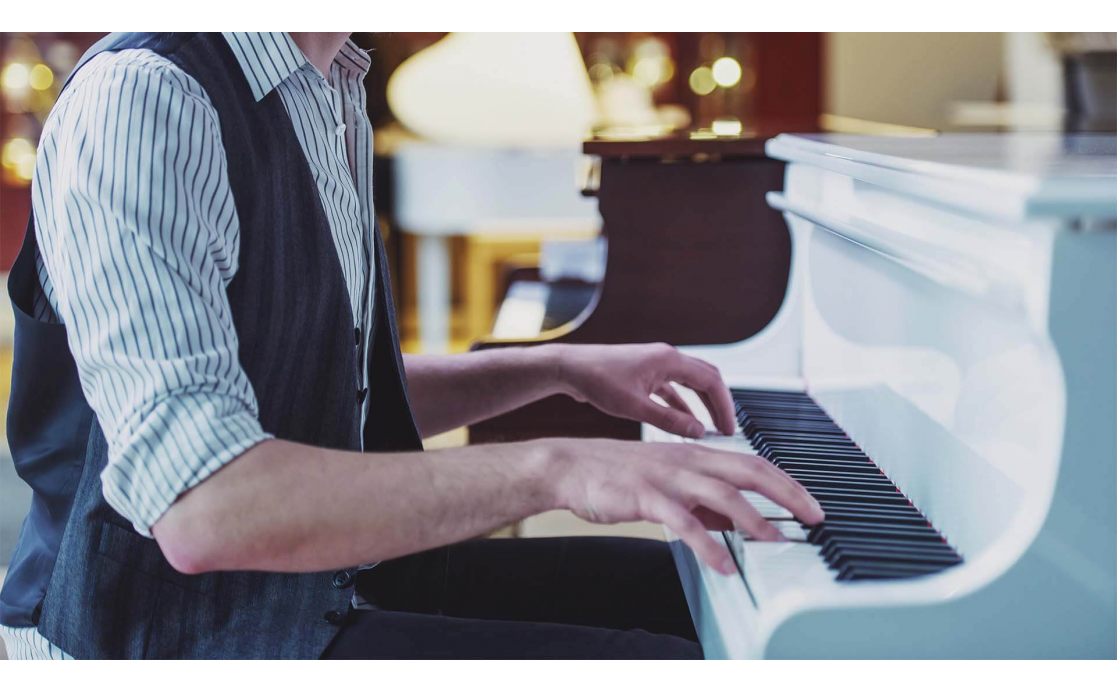How to Improve Your Piano Posture

Better piano playing, better hand position on the keys, and better, more enjoyable piano lessons will all result from learning proper posture and sitting on the piano bench.
How to sit correctly at the piano is the first thing a professional piano teacher will cover. This is due to how simple it is to make a mistake at first and develop a harmful habit. However, better piano playing, better hand position on the keys, and better, more enjoyable piano lessons will all result from learning proper posture and sitting on the piano bench. While there is less written about proper posture for pianists, maintaining excellent posture is just as essential for every musician. A player with a solid posture can train or perform for extended periods without getting tired or hurting themselves. In addition, a player with a solid posture can play with greater control, and, as a result, a higher quality of sound is generated.
Body Positioning
The proper bench position is the first step in adopting a good piano posture. The bench should be positioned so the player can comfortably reach the keyboard. Sit on the bench and put your arms before you to gauge the proper distance. Without bending or stretching, your fingertips should be able to contact the front edge of the keys. Your knees should be level with or just below your hips, and your feet should be flat on the floor.
The keyboard's width should be the center of the piano bench. The bench must be directly facing the piano. Aim to sit on the bench's front half. Keep your feet relaxed and level on the ground from heel to toe. Maintain your buttocks as the center of your weight. To comfortably move everything up to your fingertips, sit with your shoulders and arms relaxed and your back straight.
After determining the ideal distance from the keyboard, sit up straight and position your back parallel to the back of the bench. Avoid slouching or leaning forward since these postures might stress your neck and back. Your arms should naturally hang at your sides, and your shoulders should be level and intense.
Hand Placement
The position of your hands on the keyboard is essential for proper piano posture. Start by putting your hands on the keys with your wrists parallel to the keyboard and your fingers curled. Your thumbs should occupy the white keys, and your other fingers should be curled on the black and white keys. Your fingertips should be in close touch with the keys while your fingers are relaxed.
Do not tense your fingers or push too firmly on the keys since this might lead to damage and tiredness. Instead, use a gentle touch and concentrate on control and accuracy. Your hands should travel naturally across the piano.
Put your elbows in a comfortable position and a little higher above the keyboard. You're sitting too near to the piano if your elbows are too close to your body.
Take your shoulders off. Ensure they remain that way even when you play a challenging game. In response to stress, some people tend to elevate themselves. Ensure your pulse is slightly higher than the arm line when playing the piano's right hand. Always keep it loose. If your hand flies away quickly when a buddy throws it from the piano as you play, you're doing an excellent job of keeping your wrist loose.
Also Read: How To Select A Great Used Piano
Use the piano posture and gravity.
Use your entire arm's weight to play a note on the piano rather than just your fingers. You are moving the piano bench slightly away from the piano to practice this. Try putting your arm before you as if holding the keyboard, then letting it fall into your lap. As your arm sags onto your lap, feel its natural weight. Visualizing yourself as a puppet with only a few strings and keeping your arm aloft could be beneficial. When the cords are cut, the arm falls forcefully and without resistance.
Finger Position
The position of your fingers on the keyboard is also essential for proper piano posture. Each finger should be assigned to a specific set of keys, and use the correct finger for each note. For example, the thumb is typically used for the white keys, while the other fingers are used for the black keys.
Maintaining proper finger positioning while playing chords or multiple notes at once is also important. Your fingers should be curved and in contact with the keys, and you should avoid letting your fingers collapse or flatten out on the keyboard. This can cause strain and discomfort in your hands and fingers over time.
For better posture at the piano, sit and lean.
While playing, kids like sliding around on the bench, although this isn't a particularly efficient use of energy. They should sit still and feel free to lean if necessary. Start seated to the left on the bench if the entire piece is performed low on the piano or to the right if it is played high. Sit in the center and lean to reach all the keys if a piece travels low and high. A footrest can tremendously aid in providing balance and something to push off when leaning.
Read More: How To Avoid Injury While Playing Piano
Additional Information:
If you are looking to buy a piano in Dubai or surrounding areas or do not have the budget for a new one, visit Used Piano Dubai, we are offering different brands of pianos at the best price. Also, you can avail yourself of our piano tuning and piano repair services.
